Galaxy Note 7 benchmarks: Exynos vs. Snapdragon head-to-head
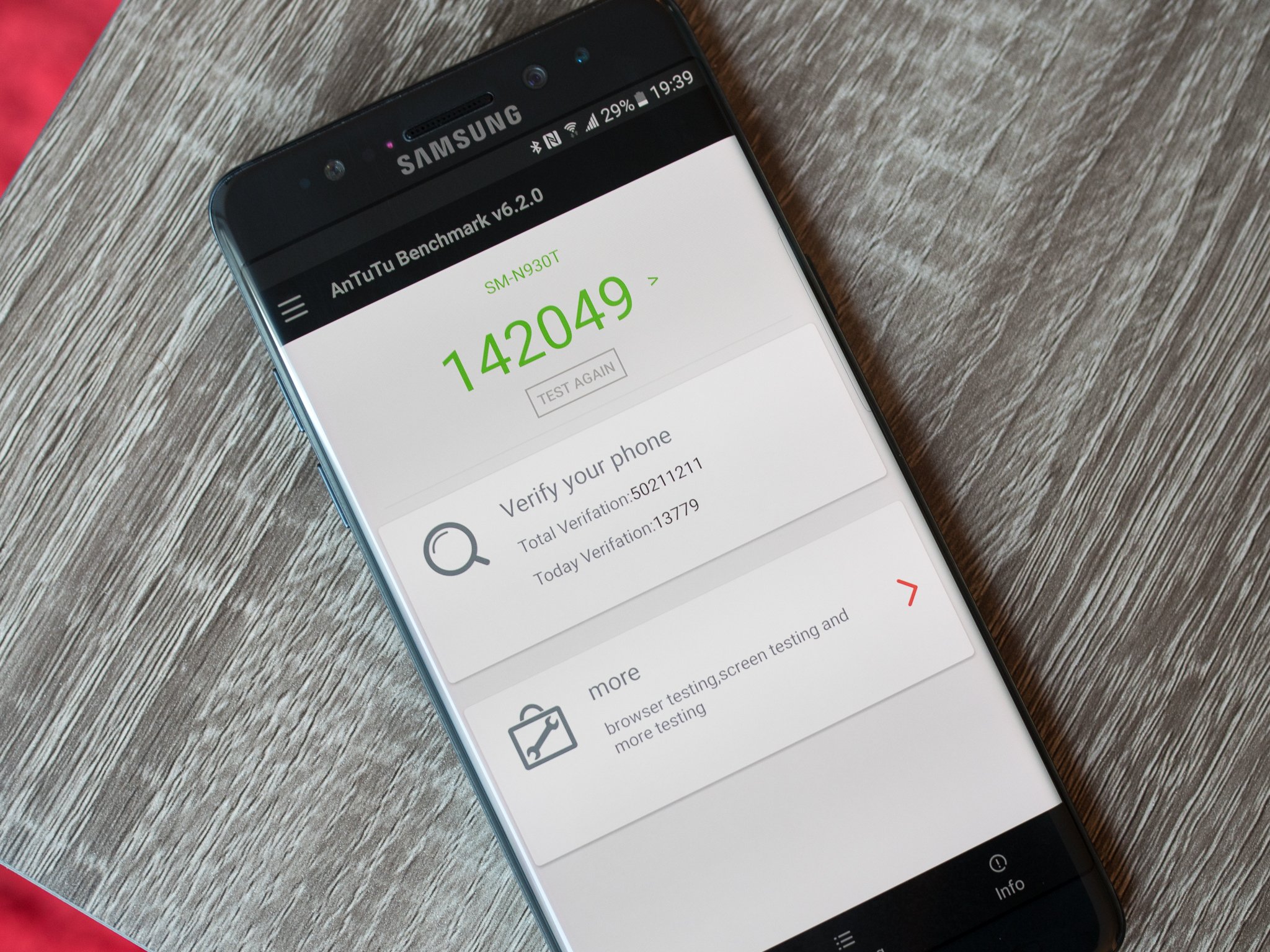
It's always been our opinion that benchmark apps for Android phones really only tell you how well a phone runs the benchmark apps. They give a score that, while meaningful in some ways, tend to be used as some sort of gospel about how one phone is clearly better than another when that's not really the case. And they can be confusing for some folks who aren't exactly sure what any of those scores mean. We usually forgo running any or talking about them at any length and instead focus on the user experience.
This time, we're going to venture into the benchmark waters because we have both the Qualcomm Snapdragon 820 version and the Exynos 8890 version of the Galaxy Note 7 here. Samsung promises that users won't see any real-world performance differences between the two — and we agree — but we wanted to see the synthetic differences from a handful of benchmark testing apps in Google Play. We're not going to read too much into any of this, and we're certainly not about to declare any winner. Both models offer the same experience while you're using them. For the folks who do care about those numbers but may not have an opportunity to get both models, here are the results.
About the tests
We tested a Samsung SM-N930F (UK model) with an Exynos 8890 CPU and a Samsung SM-N930T (U.S. T-Mobile model) with a Qualcomm Snapdragon 820. Both phones have the same basic configuration — a personal account, a work account, and a small handful of apps from the Play Store installed.
Nothing special was done before we tested. We used the phone normally, installed the apps, then ran the tests without restarting or clearing anything or killing any apps. We even tested in the evening after a day of normal use. None of the phone's features were disabled. Really, we treated them like we do every phone and just ran the apps we installed to benchmark them.
Geekbench 3
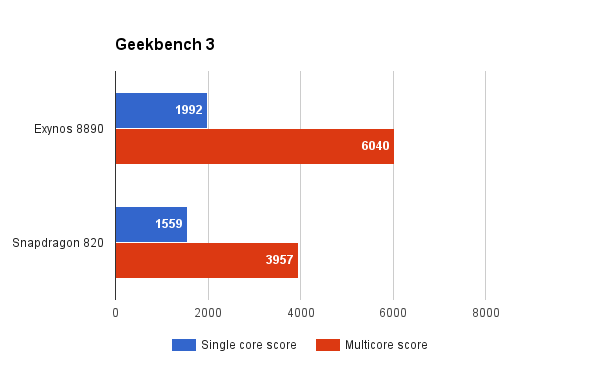
Geekbench 3 has several tests that aim to simulate real-world CPU performance, and can utilize all of the processor cores. The results are calculated and returned as an overall indicator of your phone's processor performance in both single core tests and multicore tests. Higher scores are better.
As expected, the Exynos clearly calculates and processes data "better" than the Snapdragon. Surprisingly, the single core scores are both much lower than leaked benchmark results from early versions. We'll attribute that to two things — fully set up devices with apps and account synchronization running, and not clearing app cache and killing off the background processes. But keep in mind that a lower multi-core score on the Snapdragon 820 is expected because it has four cores, half the number as the Exynos 8890.
Get the latest news from Android Central, your trusted companion in the world of Android
AnTuTu 6
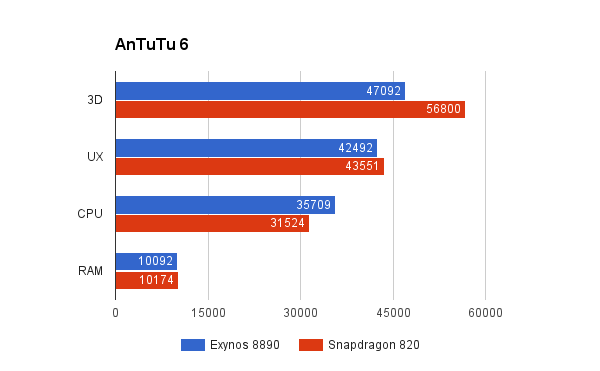
AnTuTu runs a series of tests of four key areas of your phone's performance — the processor, 3D graphics ability, memory, and user interface. The results are calculated and delivered as four individual scores, with a higher score being better.
The Exynos again scores better in processor performance testing, but the Snapdragon marks higher in 3D and user interface features. The RAM testing is as expected — both phones have the same memory modules and controllers, and the results are identical within an acceptable margin of error.
GFXBench
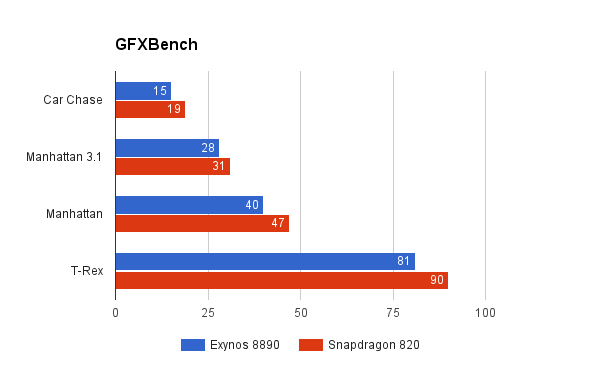
GFXBench measures graphics performance with a focus on long-term performance stability, render quality and power consumption. The tests use high-quality and high polygon 3D graphics, and we tested the off-screen versions of the Car Chase, both Manhattan and Manhattan 3.1, and T-Rex at 1080p.The results are the average frames per second (fps) for each test.
We are unable to compare the results of the render quality tests because our Exynos version would only return an Out Of Memory error. The Snapdragon version scored 2510 for the standard render quality test, and 3632 for the HQ render quality tests. These numbers are the PNSR (peak-to-peak signal-to-noise) values.
Hipxel's Disk Speed and Performance
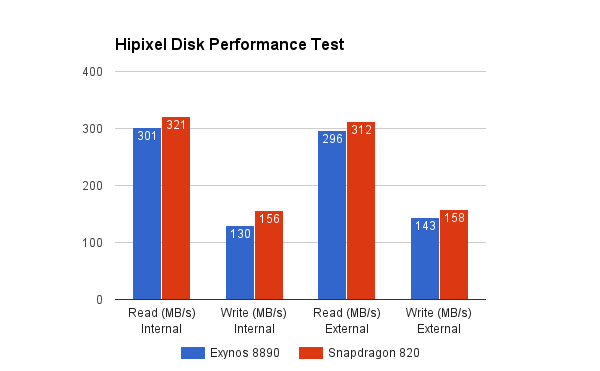
This benchmark measures the read and write speeds of the internal memory in MB/s. The labels can be confusing as both tests (internal and external) are measuring the built-in internal memory and not any SD card or other attached storage.
The internal tests are the read and write speeds of the phone's application data storage partition. This is where the private data is stored and where most apps are installed. The external tests measure the speeds of the internal SD card storage, where media and some application data is stored.
The app will measure SD card performance, but we choose to pass on that test as we don't have two brand-new SD cards of the same make and model to use for a comparison. The results would be similar, and won't show any measurable differences.
Download Disk Speed/Performance Test by Hipxel
What does this mean?
Not a lot, really.
Sure, the Exynos has a "better" CPU and the Snapdragon has a "better" GPU if you go strictly by the numbers in these benchmarking apps. Both phones have the same memory and the same storage, as well as the same parts and logic to control each, and the results reflect that.
But using them will always count more than any benchmark numbers. As mentioned, we were curious and had both versions so we're sharing with people who are curious as well. Don't use these as proof of anything, and we'll call them both winners — it's like youth soccer where everyone wins a trophy because it's all good.
Feel free to do what you will with the numbers in the comments.

Jerry is an amateur woodworker and struggling shade tree mechanic. There's nothing he can't take apart, but many things he can't reassemble. You'll find him writing and speaking his loud opinion on Android Central and occasionally on Threads.
